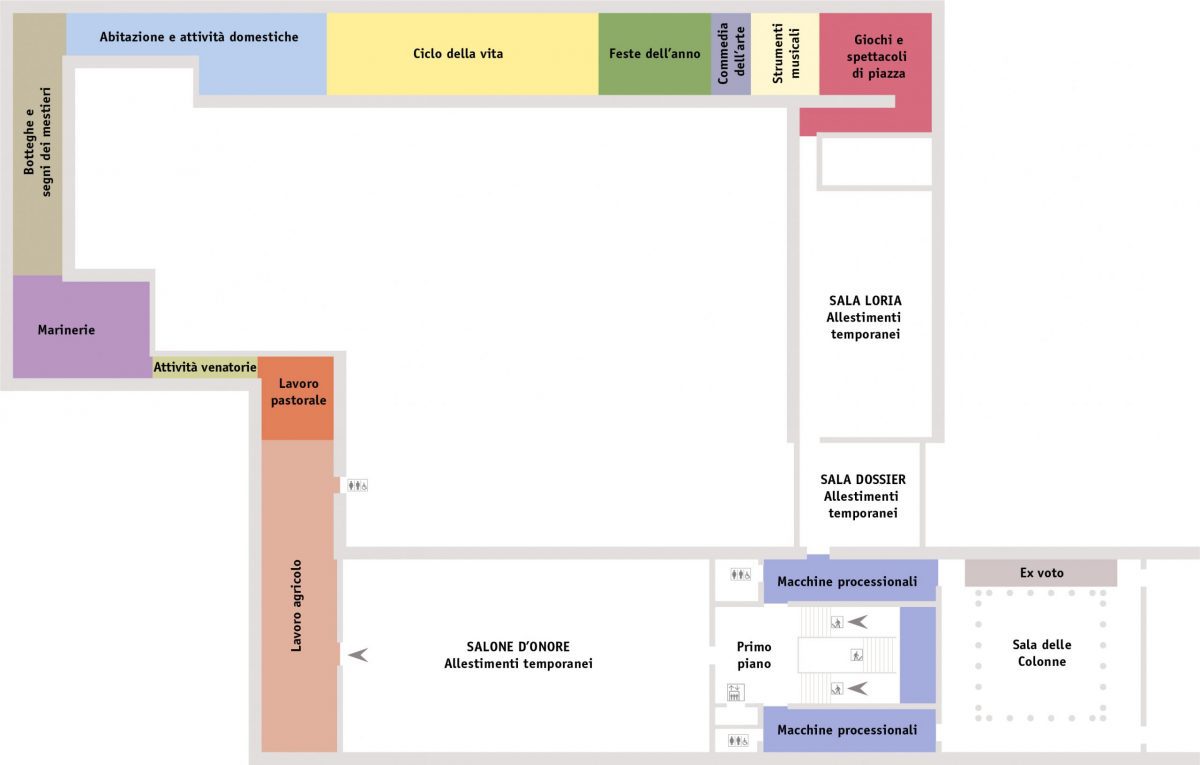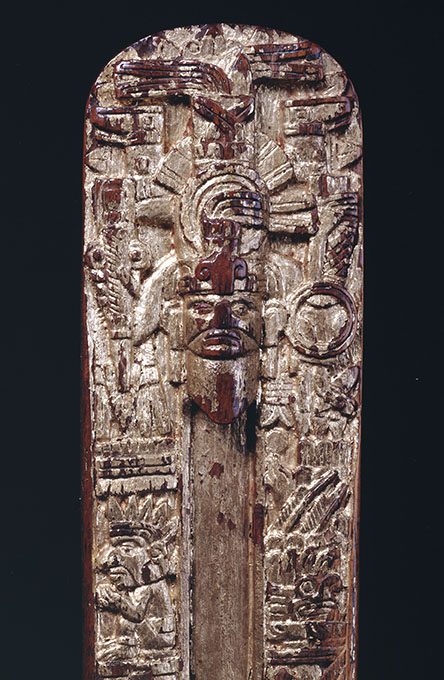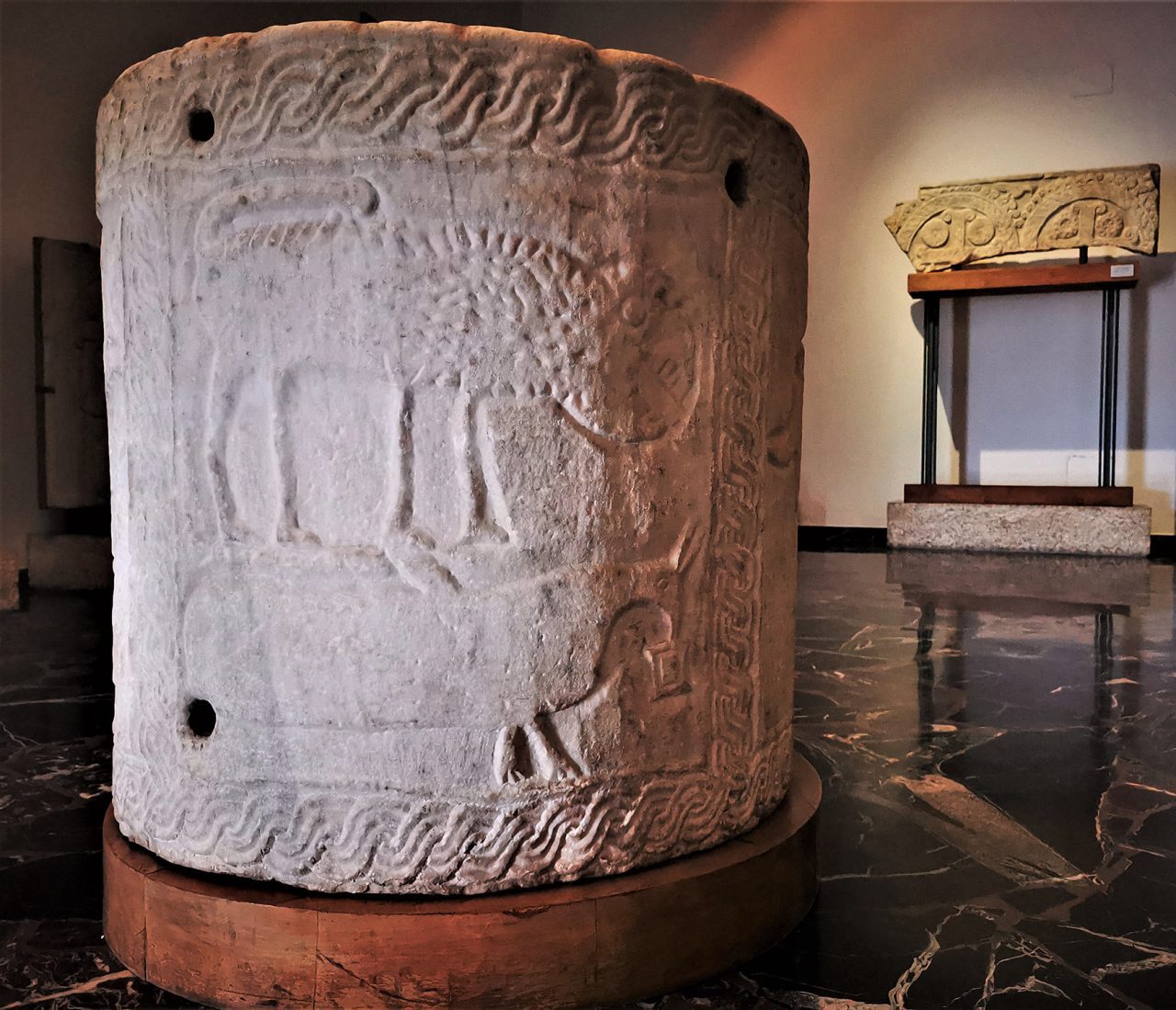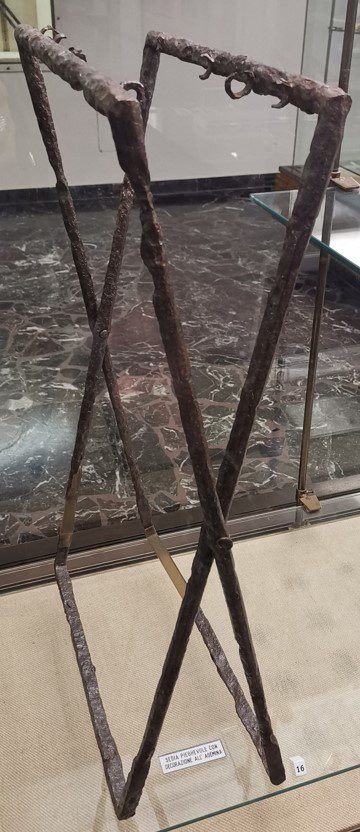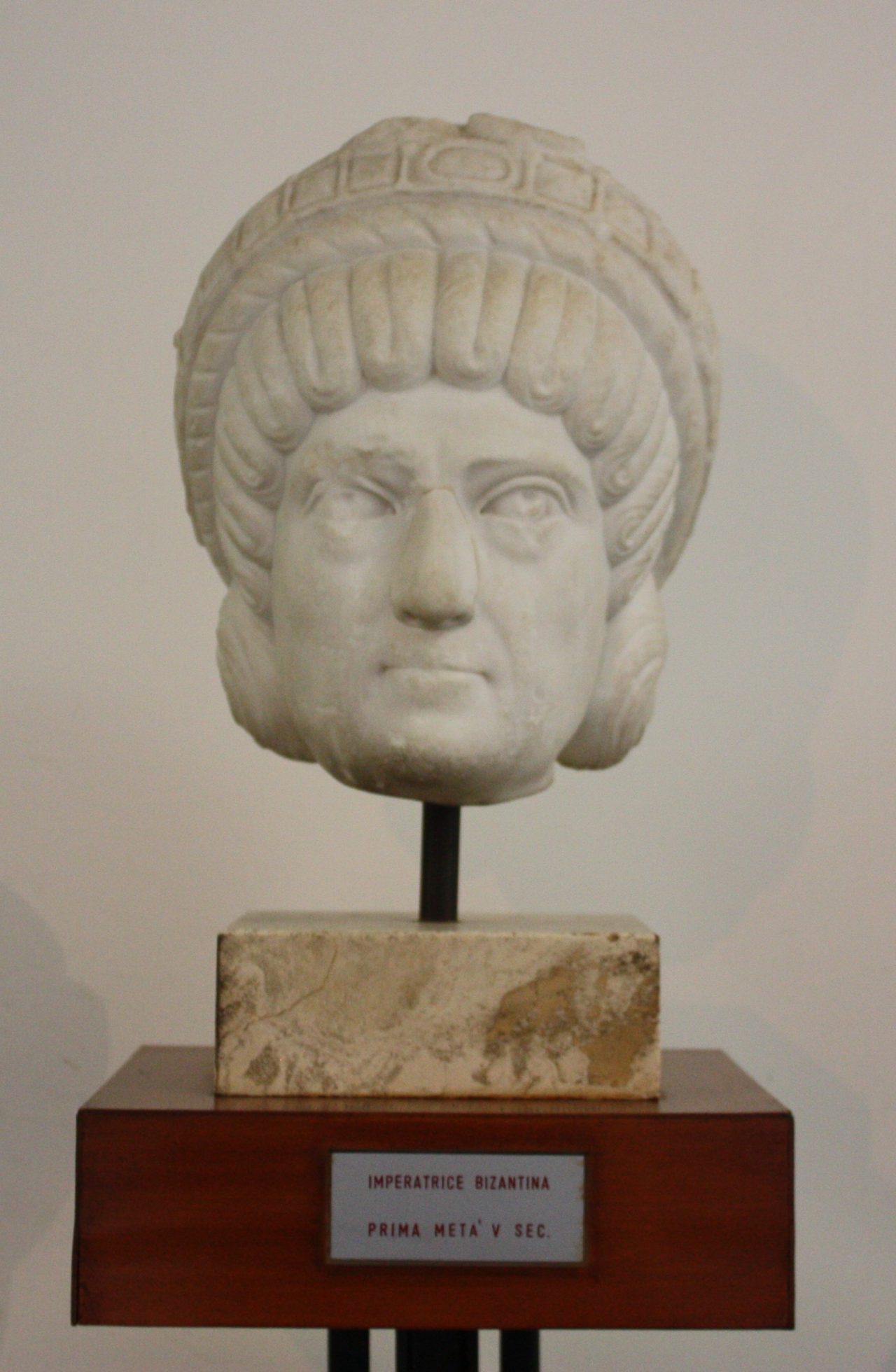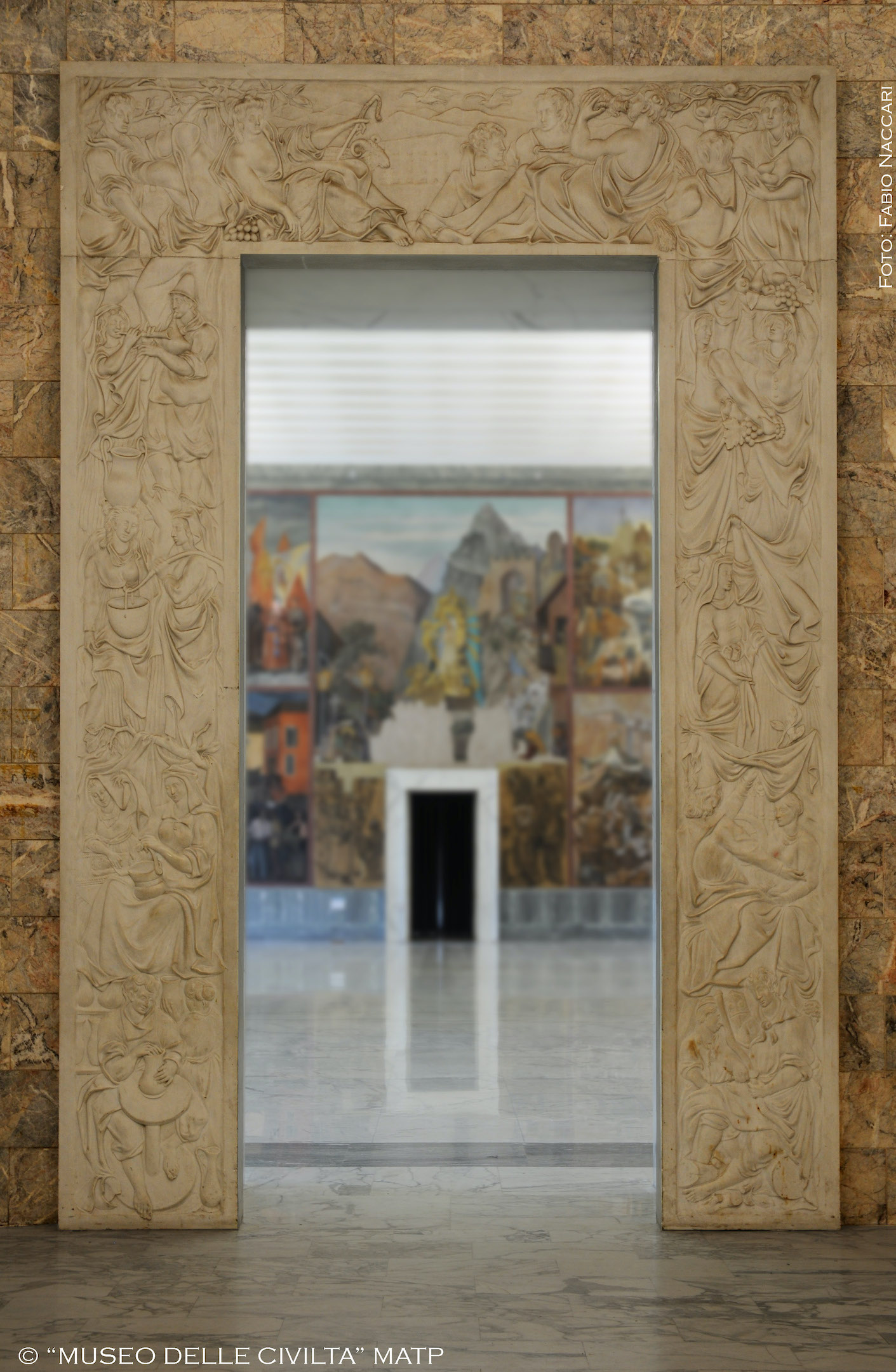
Amerigo Tot, Elementi caratteristici del folklore, bassorilievo in marmo (1941-1942)
Amerigo Tot, Characteristic elements of folklore, marble bas-relief (1941-1942)
[ultimate_maps id=”30″]
Le scene ritratte lungo gli stipiti e l’architrave, ispirate ai mestieri artigianali e al ciclo della vita, sono strettamente correlate con le collezioni conservate nell’edificio, ideato già negli anni trenta per ospitare il Museo delle Arti e Tradizioni Popolari.
Lo scultore ungherese Amerigo Tot realizzò anche un portale a due ante con bassorilievi lignei che andò distrutto durante la guerra: venne utilizzato come legna da ardere dagli sfollati che avevano trovato ricovero negli edifici dell’EUR.
Avrebbe dovuto sormontare il portale L’angelo delle tradizioni, una grande scultura bronzea che non venne mai eseguita, per la difficoltà di reperire metallo in tempo di guerra.
The scenes depicted along the jambs and the lintel, inspired by crafts and the cycle of life, are closely related to the collections kept in the building, designed in the Thirties to house the Museum of Arts and Popular Traditions.
The Hungarian sculptor Amerigo Tot also created a two-leafed portal with wooden bas-reliefs that was destroyed during the Second World War. The Angel of Traditions, a large bronze sculpture, should have surmounted the portal, but it was never made, because of the difficulty of finding metal in times of war.
Dove si trova
Museo delle Civiltà – Museo delle Arti e Tradizioni Popolari “Lamberto Loria” – Primo piano, Salone d’Onore
